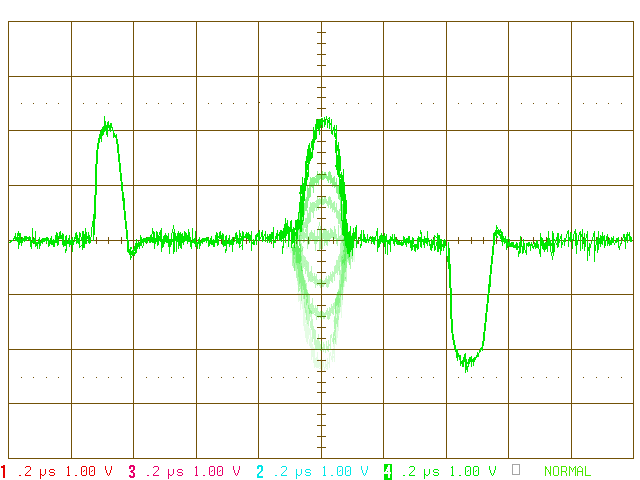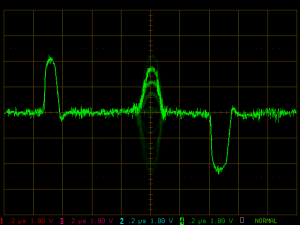Doppler Radar

Figure 1: Bipolar pulse: in German the so-called „Läuschen“ (a small louse).

Figure 1: Bipolar pulse: in German the so-called „Läuschen“ (a small louse).
What is a Doppler-Radar?
Doppler-Radar
A Doppler radar is generally radar which uses the Doppler effect upon reception of the echo signal. In modern radar, this is always and without exception the case. For this reason, this additional attribute is generally dispensed with. If nevertheless, the term “Doppler pulse radar” is used, this is only an explicit indication that this radar is not an FMCW radar.
History
However, this was not always the case in the history of radar. The first radars that could use a Doppler frequency for fixed-target suppression were the Würzburg giant, built during the Second World War. Especially those sets which were equipped with the accessory “Würzlaus”. This was a special filter for the intermediate frequency, that filtered out the interferences of chaff. This radar was thus the first Doppler radar in the world.
During the calibration, a
coherent oscillator
had to be tuned exactly to the intermediate frequency of the receiver (see Figure 1).
Fixed targets generated a stable pulse shape.
Moving targets with Doppler frequency generated a bipolar alternating pulse.
In line with the camouflage name “Würzlaus”,
this bipolar impulse in German was called “Läuschen” until the late 80s.
The term “Doppler radar” was later reused with slightly modified meaning:
- In the case of CW radar for motion detectors, this commercial designation should revalue the simple radar modules, knowing that this type of radar cannot receive anything other than the Doppler frequency.
- In the case of Weather radar, the designation was initially an additional attribute for a more modern radar since, in the early days, there were still many weather radars that could not detect a Doppler frequency. Later, with the development of polarimetric radar since the late 90s, this meaning was reversed: the name Doppler radar was used to specify the older sets, which could only operate in a single polarization mode.
- In the air-based radar, a completely new form of lateral angle measurement with the help of the Doppler frequency, the so-called Doppler beam sharpening, was developed in the 1970s.
Use of the Doppler frequency
In modern radar sets, the Doppler frequency is used for a variety of purposes:
- The classic use is still the distinction between moving and unmoved targets.
- The Doppler frequency can be directly measured in modern radar devices by means of the Fast Fourier transformation. Especially weather radar measures the wind speed and the wind direction. Surveillance radar measures the Doppler frequency to calculate the radial speed of the targets.
- Surveillance radar also uses extensive Doppler filter banks to characterize the target as with a fingerprint. In the best case, even the aircraft type can be determined.
